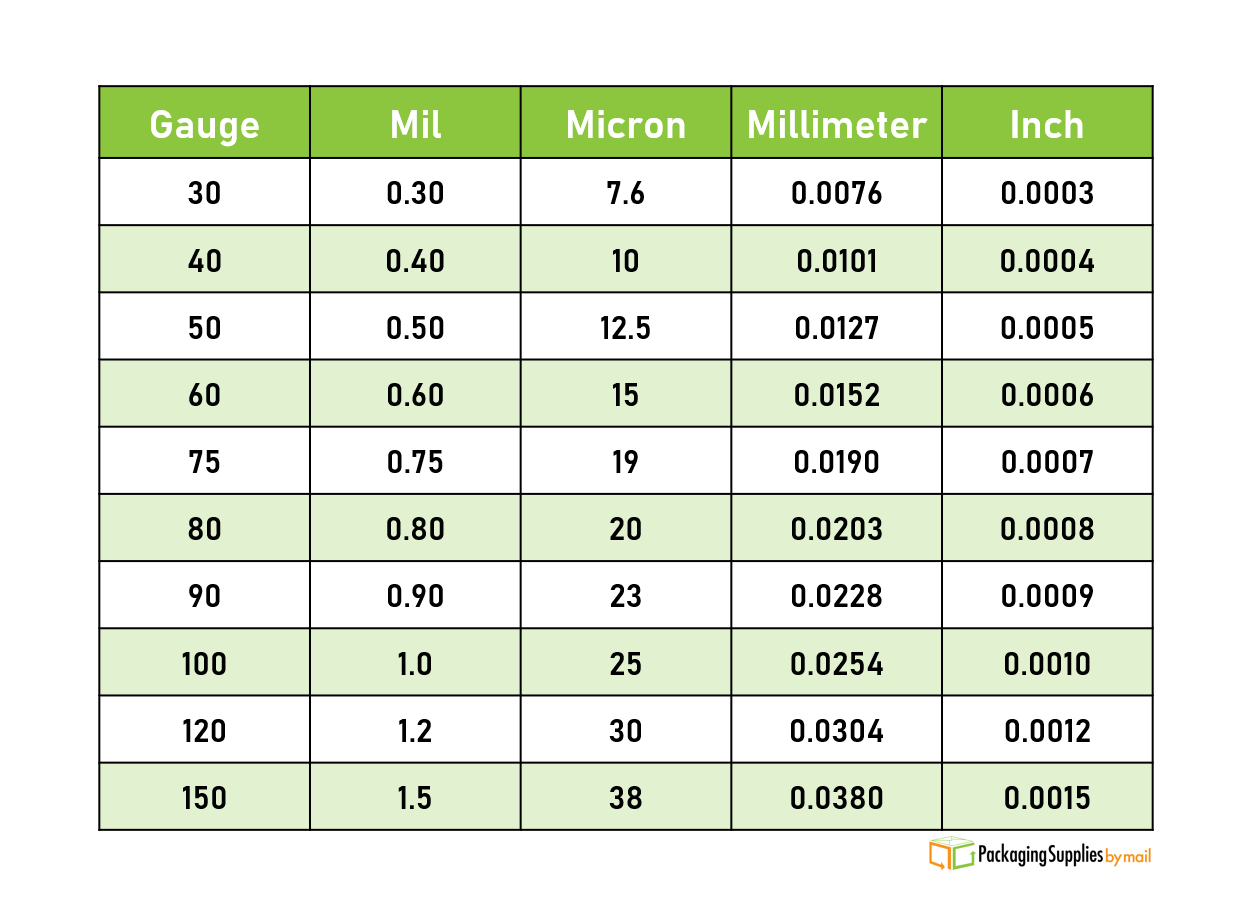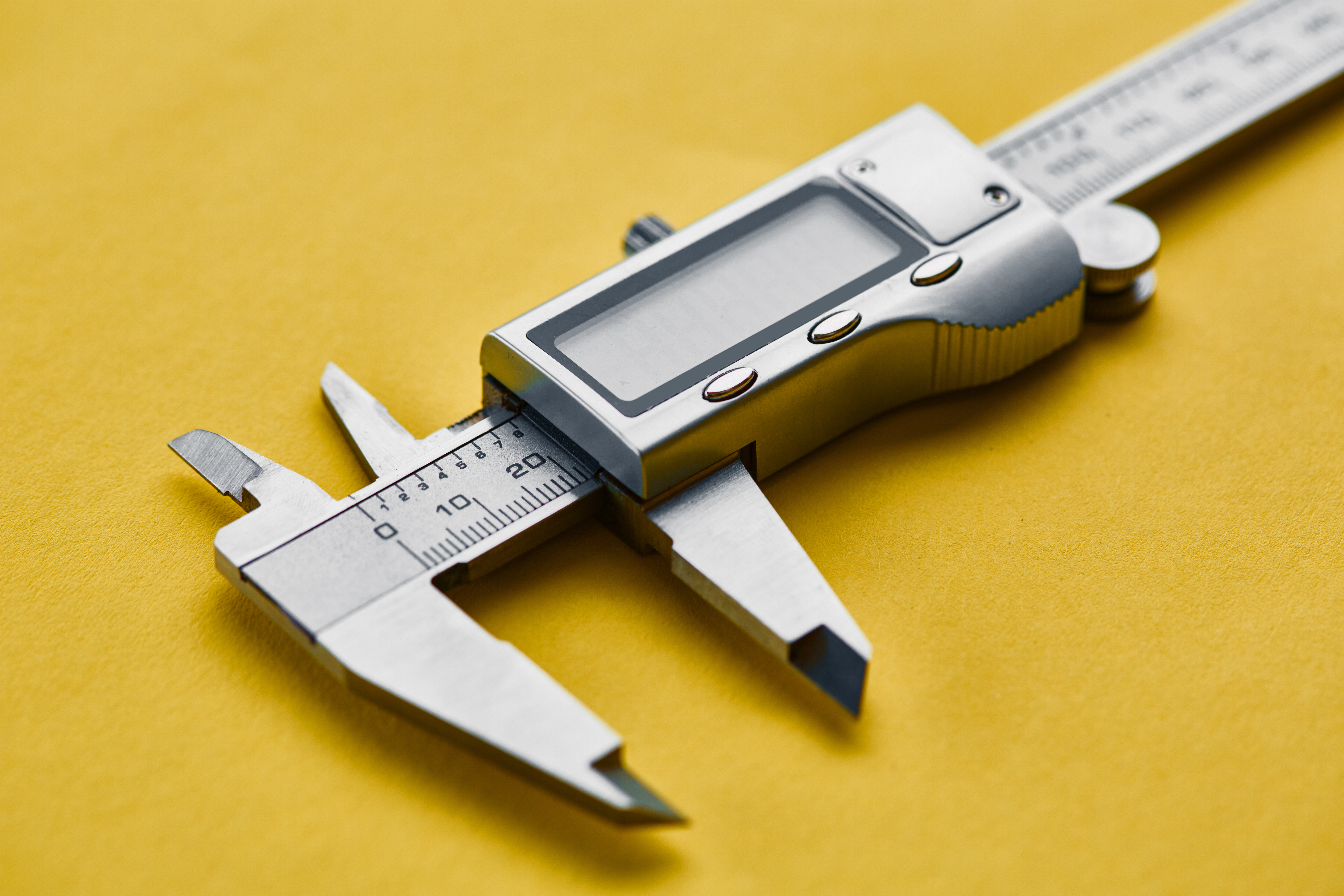Packaging materials like stretch film and packing tape come in a wide variety of types and sizes. Everybody knows length and width, but then you come across terms like “micron” and “gauge” that can leave you scratching your head. These terms are measurements of thickness, or how large the material is when laying down. Thickness is a critical measurement when it comes to packaging materials; thinner materials are lighter and more flexible, while thicker materials are heavier and more durable.
Just remember that stretch wrap, tape, poly mailing envelopes, poly bags, and disposable gloves are already very thin, so these will be very fine measurements dabbling in thousandths of an inch and other tiny amounts. So with that in mind, the following is a breakdown of how to measure thickness in different units and how these measurements relate to various packaging materials.
Micron
A micron, also known as a micrometer or mic, is one-millionth of a meter, or one-thousandth of a millimeter. Microns are represented by the symbol “µm” and are easy to calculate and scale along the metric system (10,000 microns make up a centimeter, and so on). As a base of reference, the average human hair clocks in at around 100µm while a grain of sand is around 500µm long.
Microns are frequently used for measuring the thickness of stretch film. Stretch wrap is typically produced in the 10-30µm range, with 20-23µm as the average thickness for stretch. Lighter cast stretches may go below 10µm, while heavier blown stretches can sometimes exceed 30µm.
Mil
A mil is one-thousandth of an inch. Also called a thou or a point, a mil is roughly 25.4 microns, or 0.0254 millimeters long. For reference, the average human hair is around 4 mil while a grain of sand comes in at about 20 mil.
Mil is the standard unit of measurement for packing tape. Tapes are usually available in the 1.6-3.0 mil range, with the average tape coming in at 2.0 mil. Lightweight acrylic tape trends toward the thinner side while heavy-duty hot melt tape is typically a thicker material. High performance tapes like filament tape or kraft tape can have thicknesses going into the 4-6 mil range. For more information on what types of tape you should use for a given situation, we have a great beginner's guide to packing tape.
Outside of tape, mil is commonly used to measure and classify many other types of packaging materials. Both industrial and medical-grade disposable gloves are typically available in 4-5 mil, with lighter food service gloves coming in at around 2 mil. Poly mailers are sold in thicknesses of 2-3 mil, while poly bags have a wider range at 2-6 mil. Thicker materials can be more expensive, but they also offer better durability and protection.
Gauge
Gauge, at least as it relates to packaging materials, is one-hundred-thousandths of an inch; therefore, gauge is 100x the measurement in mil (1.2 mil = 120 gauge) and roughly 4x the measurement in microns (20 microns ≈ 80 gauge). The average human hair is measured at around 400 gauge while a grain of sand is about 2000 gauge, or 2% the length of an inch.
Gauge is a popular unit of measurement for stretch film. Most stretch wraps are manufactured in the 40-120 gauge range, with 80-90 gauge being the industry average. High performance wrap is made in lower gauges (around 40-60), but offers superior tensile strength when compared to regular stretch wrap made at equivalent gauges due to a difference in the manufacturing process. Blown wrap, on the other hand, is made at much higher gauge levels, sometimes exceeding 120.
Measurement Conversions
Perhaps more important than learning what the different units of measurement are, one needs to know how to convert their numbers between the different measurements. Thankfully, the conversion process is simple and straightforward.
Remember that microns are roughly a quarter (25.4%) of the gauge, but not exactly a quarter.

The following conversion chart can help you visualize the differences and your calculations:

There is also a free and handy online calculator that can instantly convert from mils to microns, or microns to mils.
Now you know how to measure thickness and how to convert between the different measurements! Be sure to refer back to this article to jog your memory on the different measurements of thickness.









